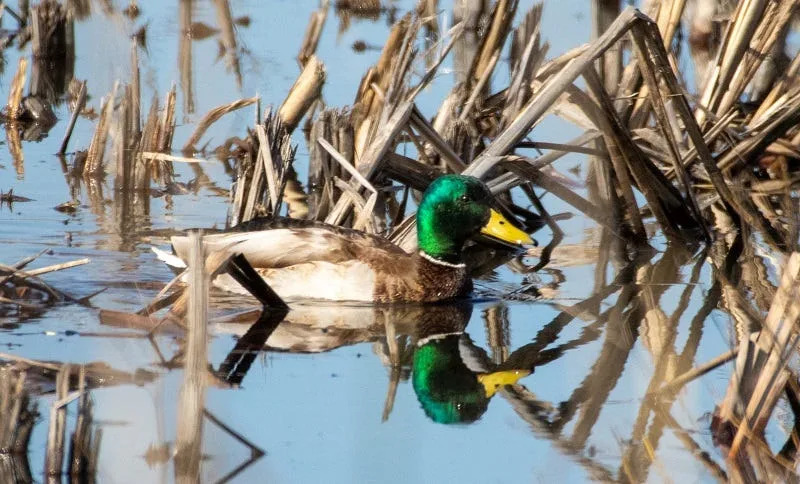Populations of wild ducks in California are seeing a strong surge in population this year, according to state wildlife officials.
The California Department of Fish and Wildlife has completed its 2025 waterfowl breeding population survey, with significant increases observed in the numbers of both mallard ducks and overall duck species, the agency said in an written statement.
Researchers found the breeding population of mallards has increased by 49%, from 177,828 to 265,640, while the populations of other ducks saw a 27% increase, from 373,864, to 474,495, the CDFW reported.
CDFW Waterfowl Program Biologist Melanie Weaver said the numbers were encouraging.

“The survey indicated an increase in mallard abundance, and habitat conditions were good in Northern California, so we expect average to above-average production for all waterfowl species,” she said.
Mallards are the most prevalent duck species in North America, according to a U.S. Fish and Wildlife Service fact sheet.
"This species is found in all flyways and in almost any freshwater habitat, according to the agency's website. "The mallard drake is often called a 'greenhead' due to its distinctive iridescent green head. The females are known for making the quintessential 'quack' of a duck."
How do wildlife officials track duck populations?
The CDFW has been carrying out surveys to gauge the health of duck populations since 1948, according to the agency. The work is conducted primarily via airplanes.
"The population estimates are for those areas where the vast majority of waterfowl nesting occurs in California, including wetland and agricultural areas in northeastern California, throughout the Central Valley, the Suisun Marsh and some coastal valleys," the statement said.
More ducks on the way
Many of the ducks that regularly winter in California have not yet arrived in the Golden State, as they remain in their breeding areas in Canada and Alaska, according to the CDFW.
Results from population surveys in those areas are expected to be completed in late August. The surveys are used to help wildlife officials set policies related to hunting.
The 2025 California Waterfowl Breeding Population Survey Report is available on the CDFW website.
Do ducks have teeth?
No, and actually, no birds do, according to the American Bird Conservancy.
"Bird mouths are very different from those of other vertebrates," the Conservancy website states. "Over millennia, evolution has modified bird jaws into the specialized structures we know as beaks or bills, which all feathered creatures rely on instead of teeth for gathering and manipulating food. Beaks occur in many different forms, adapted for the specific diet of each bird species."
How long do ducks live?
Ducks can live 10 years or longer, according to the Knoxville News Sentinel.
This article originally appeared on Palm Springs Desert Sun: California wildlife officials report boom in duck populations








Comments